In today's world of short-lived pleasures, it is almost mystical to reach for an object that is durable and almost immortal, a luxurious piece of eternity born from ordinary ceramic dust. This is precisely the essence of Rado ceramics.
High-tech ceramics are valued in watchmaking not only for their beauty, but also for their biophysical properties. They are hypoallergenic, 500% harder than steel and 25% lighter, highly resistant to wear and tear, and have a rare silkiness to the touch.
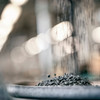
Luxurious Rado ceramic watches begin their life as pure zirconia powder mixed with colored pigments. Coloring ceramics is a complex alchemy. All pigments are organic, and achieving that one perfect shade requires extraordinary experience, because the final color can only be seen after firing in the kiln. A polymer binder is then added to the mixture to facilitate the transfer and shaping of the ceramic material. This is melted and injected under high pressure into a complex mold.

The development of this mold is an important part of the process and can take up to a year due to the high precision requirements for individual components. Even the smallest surfaces, such as screw threads, must fit together to within hundredths of a millimeter, mainly for watertightness reasons. A large gear wheel located at the top of the mold moves the various components inside, shaping the holes for the buttons, crown, bracelet links, and other elements.
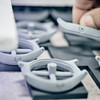
Freshly injected ceramic watch cases move off the conveyor belt, and the removal of the polymer binder and preparation for sintering begins. The injection process takes about 1 minute, but sintering takes up to two days. It is very important to heat slowly to a temperature of 1450 °C and then cool slowly.
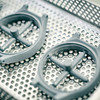
The actual color and final density of the ceramic pieces appear after they are removed from the kiln. The individual compounds—zirconium oxide and colored pigments—combine when exposed to high temperatures and shrink by approximately 23%. The sintered components then undergo a polishing process in containers with granules of varying coarseness, where it is possible to create a perfectly high gloss or fine matte finish. One of the final steps in the production of the cases is the removal of the center cross by laser, which is left in the middle of the case for as long as possible to protect it from deformation. The serial numbers are also laser-engraved for tracking and inspection purposes.

If you want high-tech plasma ceramics, you need to go further. Unlike other ceramic colors, metallic coloring does not come from pigment. Pre-polished white ceramic components acquire their metallic appearance in a special reactor—a plasma furnace, where ceramics react with argon and methane at a temperature of 20,000°C. Currently, there are only three plasma furnaces in the world, and the entire process is protected by patent, making plasma casings truly unique worldwide.
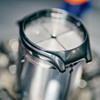
The temperature reaches 20,000 °C. The result looks like metal, but is actually solid ceramic, offering all its usual advantages, especially low weight and excellent scratch resistance. Unlike PVD, this coloring is not only on the surface, but also inside the material.
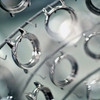
The final product is a perfect ceramic watch.
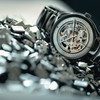
See the complete range of Rado watches in our e-shop:



